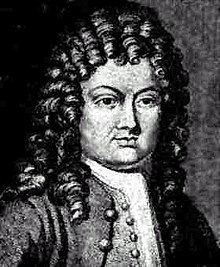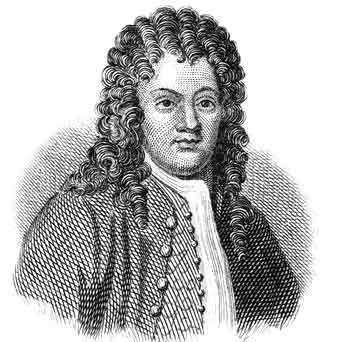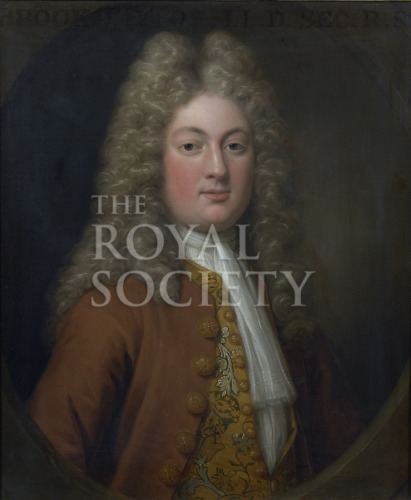Residence England Name Brook Taylor Fields Mathematician | Nationality English Role Mathematician | |
Died November 30, 1731, London, United Kingdom Books Dr. Brook Taylor's Principles of Linear Perspective, Or, The Art of Designing Upon a Plane the Representation of All Sorts of Objects: As They Appear to the Eye Parents Olivia Tempest, John Taylor Education St John's College, Cambridge, University of Cambridge People also search for John Machin, John Keill, Olivia Tempest, John Taylor, Louis Goupy | ||
History Of Pioneers Of Polynomial Approximation Of A Function: Brook Taylor & Colin Maclaurin
Brook Taylor FRS (18 August 1685 – 29 December 1731) was an English mathematician who is best known for Taylor's theorem and the Taylor series.
Contents
- History Of Pioneers Of Polynomial Approximation Of A Function Brook Taylor Colin Maclaurin
- Brook Taylor
- Life and work
- Selected writings
- References

Brook Taylor
Life and work

Brook Taylor was born in Edmonton (at that time in Middlesex) to John Taylor of Bifrons House in Patrixbourne, Kent, and Olivia Tempest, daughter of Sir Nicholas Tempest, Bart., of Durham.

He entered St John's College, Cambridge, as a fellow-commoner in 1701, and took degrees of LL.B. and LL.D. in 1709 and 1714, respectively. Having studied mathematics under John Machin and John Keill, in 1708 he obtained a remarkable solution of the problem of the "centre of oscillation," which, however, remained unpublished until May 1714, when his claim to priority was disputed by Johann Bernoulli. Taylor's Methodus Incrementorum Directa et Inversa (1715) added a new branch to higher mathematics, now called the "calculus of finite differences". Among other ingenious applications, he used it to determine the form of movement of a vibrating string, by him first successfully reduced to mechanical principles. The same work contained the celebrated formula known as Taylor's formula, the importance of which remained unrecognized until 1772, when J. L. Lagrange realized its powers and termed it "the main foundation of differential calculus".
In his 1715 essay Linear Perspective, Taylor set forth the true principles of the art in an original and more general form than any of his predecessors; but the work suffered from the brevity and obscurity which affected most of his writings, and needed the elucidation bestowed on it in the treatises of Joshua Kirby (1754) and Daniel Fournier (1761).
Taylor was elected a fellow of the Royal Society early in 1712, and in the same year sat on the committee for adjudicating the claims of Sir Isaac Newton and Gottfried Leibniz, and acted as secretary to the society from 13 January 1714 to 21 October 1718. From 1715 his studies took a philosophical and religious bent. He corresponded in that year with the Comte de Montmort on the subject of Nicolas Malebranche's tenets. Unfinished treatises, On the Jewish Sacrifices and On the Lawfulness of Eating Blood, written on his return from Aix-la-Chapelle in 1719, were afterwards found among his papers.
His marriage in 1721 with Miss Brydges of Wallington, Surrey, led to an estrangement from his father, which ended in 1723 after her death in giving birth to a son, who also died. The next two years were spent by him with his family at Bifrons, and in 1725 he married—this time with his father's approval—Sabetta Sawbridge of Olantigh, Kent, who also died in childbirth in 1730 ; in this case, however, his daughter, Elizabeth, survived. By the date of his father's death in 1729 he had inherited the Bifrons estate. As a mathematician, he was the only Englishman after Sir Isaac Newton and Roger Cotes capable of holding his own with the Bernoullis, but a great part of the effect of his demonstrations was lost through his failure to express his ideas fully and clearly.
Taylor's fragile health gave way; he fell into a decline, and died aged 46, on 30 November 1731 at Somerset House, London. He was buried in London on 2 December 1731, near his first wife, in the churchyard of St Anne's, Soho.
Selected writings
A posthumous work entitled Contemplatio Philosophica was printed for private circulation in 1793 by Taylor's grandson, Sir William Young, 2nd Bart., (d 10 January 1815) prefaced by a life of the author, and with an appendix containing letters addressed to him by Bolingbroke, Bossuet, and others. Several short papers by Taylor were published in Phil. Trans., vols. xxvii to xxxii, including accounts of some interesting experiments in magnetism and capillary attraction. In 1719 he issued an improved version of his work on perspective, with the title New Principles of Linear Perspective, revised by John Colson in 1749, and printed again, with portrait and life of the author, in 1811. A French translation was published in 1757. In Methodus Incrementorum, Taylor gave the first satisfactory investigation of astronomical refraction.
